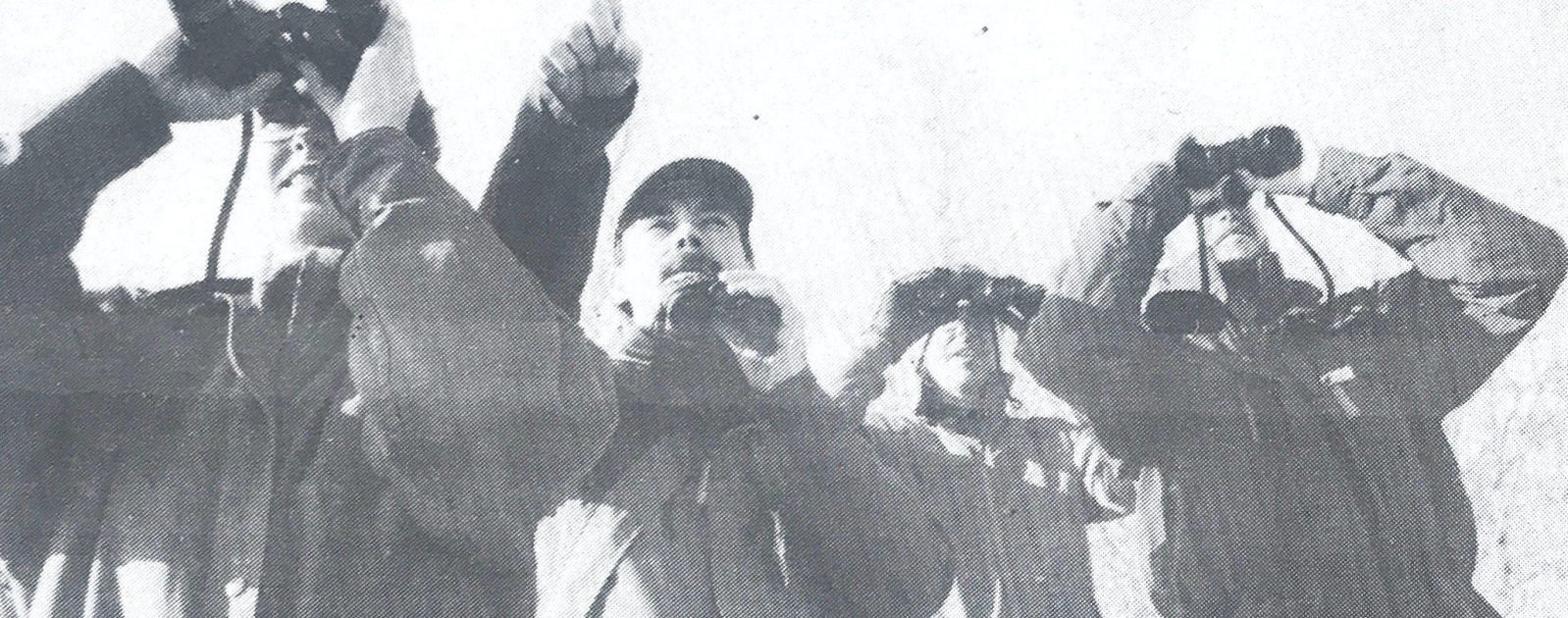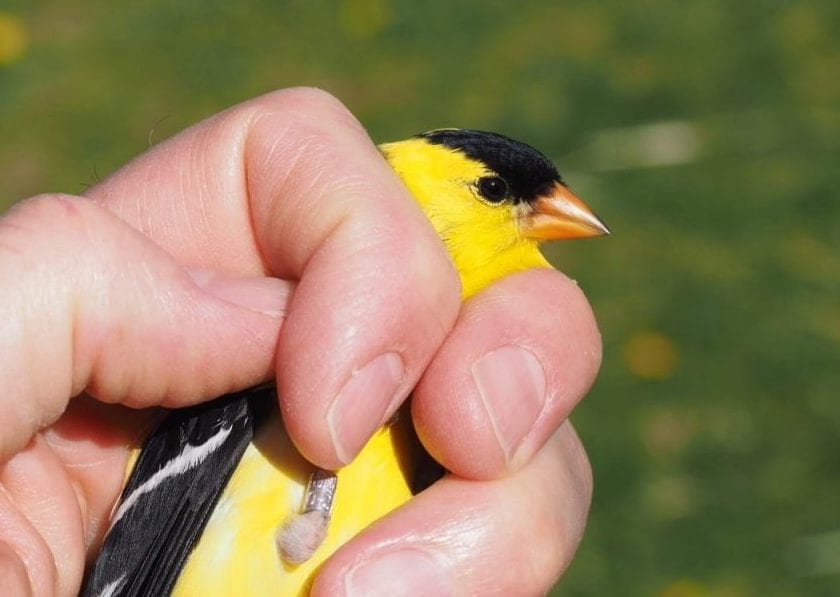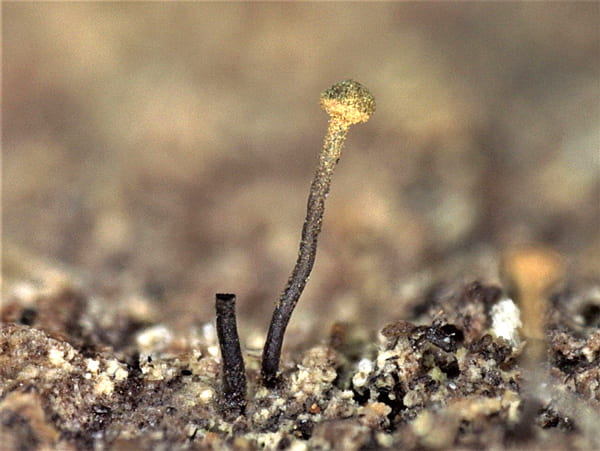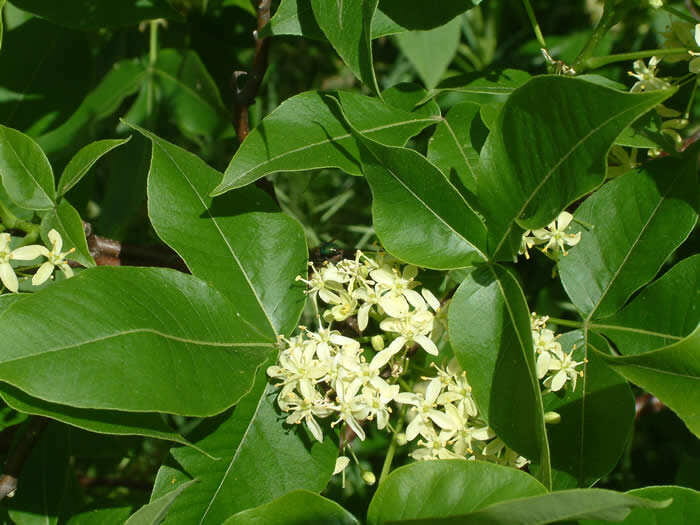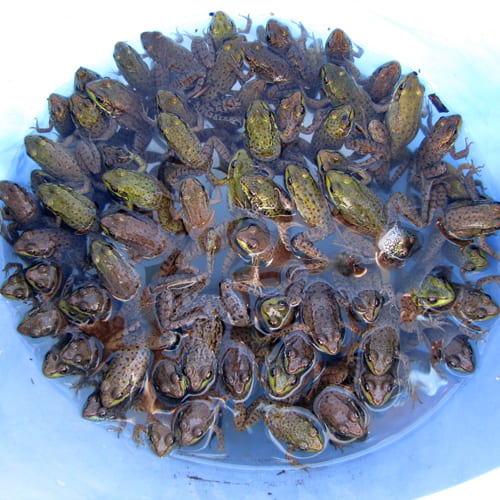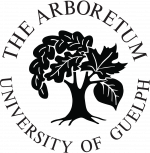Header image: Jane Robinson, Alan Watson, Owen Roberts, and Chris Earley bird watch through binoculars, 1993
The Arboretum is fondly known as a “Living Laboratory” because of its wealth of collections, studies and discoveries. The Arboretum’s extensive Gene Bank, plant collections and untouched Nature Reserve are appealing to faculty, graduate students, undergraduate students and researchers from external organizations. This has led to many exciting studies and discoveries occurring at The Arboretum.
Research conducted in The Arboretum by Guelph faculty and staff, as well as by researchers from across the province has resulted in more than 100 peer-reviewed publications and many more books, articles and stories.
To highlight the importance and excitement of research, we have selected a few studies that occurred at The Arboretum to be featured. To learn more about all of research projects and discoveries that have taken place at The Arboretum, please visit the research archives page.
Featured Research
“Extrapair paternity associated with renesting in the American Goldfinch” by G.J. Gissing, T.J. Crease, and A.L.A. Middleton
The Auk vol. 115, iss. 1 (1998)
Click on the paragraph below to read the full summary.
During the 1990s, three researchers sought to understand the significance of extrapair paternal mating in American Goldfinches. Extrapair mating is copulation outside of a social pair bond between two birds. More specifically, extrapair paternity is when a male bird fathers fledglings outside of their typical social bond. Crease, Middleton and Gissing initiated this study to discover how often extrapair paternal mating results in fertilization and understand why extrapair paternal mating happens.
To gather information for their study, the three researchers observed and gathered data from the American Goldfinch population that frequented the University of Guelph main campus, The Arboretum, and The Arboretum’s Nature Reserve. From June 1st to September 15th, 1992, they trapped American goldfinches, recorded their age and weight, took blood samples and banded them. Following this, they observed 15 nests and the female and male birds’ interactions.
Middleton, Crease and Gissing did not observe any extrapair copulations during their study. However, when they used DNA samples from the mother, father and babies of all broods, they discovered that 4 of the 15 broods had fledglings that were genetically mismatched from their parents. This means that these birds were the result of extrapair paternal mating. More specifically, 40 to 80% of the fledglings in 4 of 15 nests were genetically mismatched from one of their parents. Thus, the rate of extrapair copulation resulting in offspring was quite high.
Seeking a possible reason behind the unobserved mating, the researchers suggested that extrapair copulation occurred typically during the nest building stage. During nest building, the female American Goldfinch is responsible for building the nest while the male bird guards both her and the nest. Researchers’ first hypothesis was that male goldfinches may have had issues synchronizing their guarding schedule with the female’s building schedule if the construction of the nest was disrupted. If the male and female schedules did not coincide, the male would not have guarded his mate sufficiently and another male could have had the opportunity to mate with her. The second hypothesis was that the females may have increased the opportunity for extrapair copulation after the nest disruption. This could be because the disruption of the nest could have signalled to the female that her mate was not suitable to help raise young.
“A synopsis of Chaenotheca in North America, including a new species from southern Ontario, C. selvae, supported by morphometric analyses” by R.T. McMullin, J. Maloles, S. Selva and S. Newmaster
Botany vol. 96, iss. 9 (2018)
Click on the paragraph below to read the full summary.
An exciting discovery was made in The Arboretum several years ago. Just southeast of Wild Goose Woods Trail, R.T. McMullin and J. Maloles found a unique species of Chaenotheca, a lichenized fungi genus. After carefully gathering samples and recording information, extensive research was done to learn more about their discovery.
The research team grew and began comparing their findings with other known species of Chaenotheca. McMullin, Maloles, Selva and Newmaster examined specimens of various Chaenotheca species using standard microscopy techniques. In order to compare the various Chaenotheca species, they captured images of the specimens using a microscope. Images of the ascospores were also captured using a scanning electron microscope. From these images and studies, they found 22 morphological characteristics to use as quantitative variables to compare their new finding with.
After completing a detrended correspondence analysis using the 22 morphological characteristics, the team of researchers concluded that their discovery was unique from other existing Chaenotheca species. The new species was named Chaenotheca selvae. Unique traits of this genus of lichenized calicioid are its lichenized thallus; brown, non-ornamented ascospores; brown mazaedium; straight stalks; and orange-brown pruina on the mazaedium, excipulum and upper portion of the stalk when the lichenized fungi matures.
Chaenotheca selvae was discovered in The Arboretum and, for some time, was only known to exist in The Nature Reserve and Wild Goose Woods wetlands, colonizing deciduous tree stumps. After several years, this lichenized fungi species has been recorded in several areas in Southern Ontario.
Learn more about lichen in The Arboretum here.
“Hop tree (Ptelea trifoliata) in Canada: population and reproductive biology of a rare species” by John Ambrose, Peter G. Kevan and Randy M. Gadawski
Canadian Journal of Botany vol. 63, iss. 11 (1985)
Click on the paragraph below to read the full summary.
Ambrose, Kevan and Gadawski noticed that hop trees (Ptelea trifoliata) were successful along the Lake Erie shoreline but did not extend further inland. In response, they began a research project to clarify the reproductive biology of hop trees (Ptelea trifoliata) in southern Ontario and determine whether they could spread beyond their current region.
In 1982, their team visited all known locations of naturally occurring hop trees in Ontario to gather data. They recorded the specimens’ habitats, sizes classes, flowering, fruiting, and seedling establishment while at these sites. After analyzing their data, they hypothesized that hop trees were dioecious, meaning that some plants have male reproductive organs while others have female reproductive organs. In order to reproduce, pollen from a male plant must be carried to a female plant by either wind or a pollinator.
Following further observations in 1983, Ambrose, Kevan and Gadawski’s hypothesis was proven correct; hop trees are dioecious. However, they discovered that male and female hop trees both share traits of the opposite sex. They found that female plants do have stamens – the pollen producing reproductive organ – but they are nonfunctional. Male hop trees flowers also have pistils, but they are smaller than those of the female trees. As a result, pollinators are attracted to male and female hop trees but they still favour the females’ flowers.
In conclusion, Ambrose, Kevan and Gadawski found that hop trees are capable of spreading further north than their habitat along the shores of Lake Erie. The winds and pollinators will be able to carry fruit further north, allowing Ptelea trifoliata to spread further throughout Ontario.
“The functional integrity of northern leopard frog (Rana pipiens) and green frog (Rana clamitans) populations in orchard wetlands. II. Effects of pesticides and eutrophic conditions on early life stage development” by M.L. Harris, C.A. Bishop, J. Struger, B. Ripley and J.P. Bogart
Environmental Toxicology and Chemistry vol. 17, iss. 7 (1998)
Click on the paragraph below to read the full summary.
Harris, Bishop, Struger, Ripley, and Bogart sought to determine whether northern leopard frogs’ (Rana pipiens) and green frogs’ (Rana clamitans) embryos and tadpole growth are affected by the environmental conditions associated with apple orchard management. More specifically, whether exposure to six commonly used pesticides in Southern Ontario and eutrophic conditions would be toxic or detrimental to leopard frogs and green frogs.
To ensure that the environmental factors would be the main determinant factor of the frogs’ well-being, the researchers created fertilized frog eggs in a controlled lab setting.
Following this, the researchers divided the embryos and tadpoles between various reference and orchard sites. One of the reference wetland sites being The Arboretum. At these various sites, researchers collected substantial environmental data like water temperature, water pH, water quality and so on. Alongside this, they measured the length of the tadpoles and recorded their development. This way, the researchers could compare the frog development and environmental factors in orchards to other settings.
After comparing the gathered data, it was found that leopard frog tadpoles’ snout-tail-tip length was significantly different between those caged in an orchard and those caged in reference pond sites. This finding was only recorded in the 1994 portion of the study, though. The green frogs varied in length frequently throughout the data collection period, but the tadpoles’ size did not correlate with their location. Therefore, it was concluded that tadpoles located at the reference pond sites did not grow more rapidly or consistently than the tadpoles at orchards. Rather, the only correlation that researchers could find between environment and poor tadpole development was water temperature.


